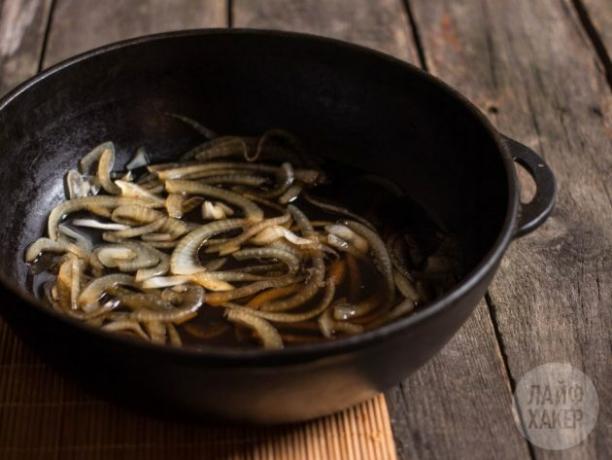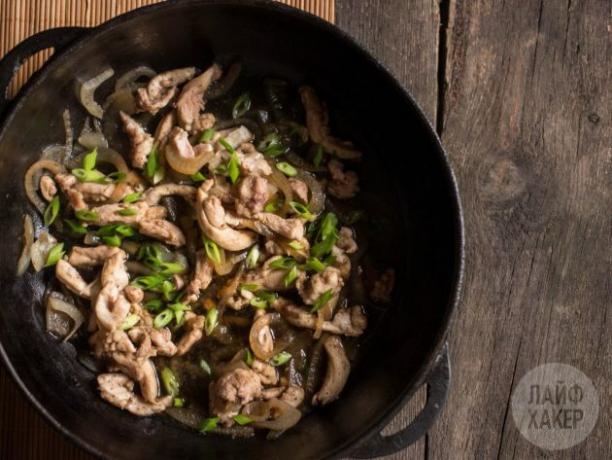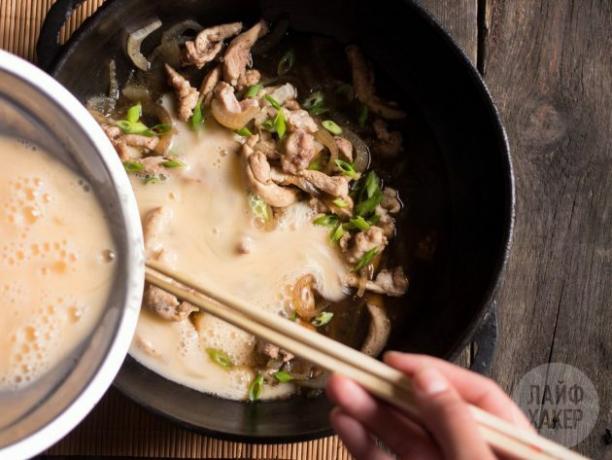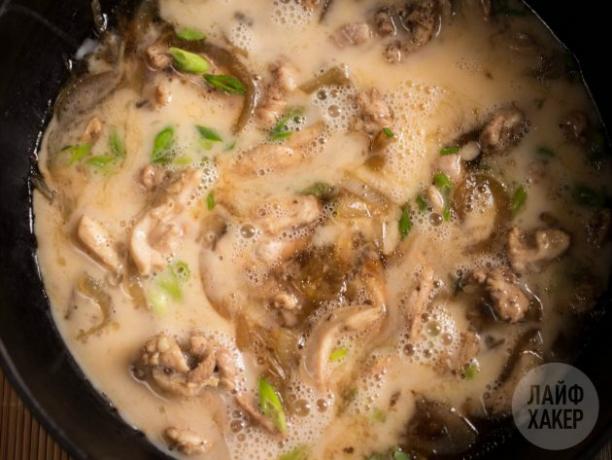Classic Japanese oyakodon with sake and dashi broth
Miscellaneous / / December 31, 2020
Oyakodon is to Japan what pizza is to Italy. Despite the exotic name, this is just a bowl of rice with chicken and egg.
The cooking process begins with the preparation of the broth. Oyakodon is based on dashi broth, which can be easily found on the shelf of any large supermarket in the sushi section.
Dilute the powder according to package directions, transfer to a thick-walled skillet and heat. Pour soy sauce into boiling dashi, add a little sugar and sake.
Some people prefer to add mirin, which is essentially the sweet equivalent of sake.
If you can't buy either one or the other, then in extreme cases, you can use simple dry white wine or rice vinegar, adjusting the amount of sugar to taste.
Once the liquid has come to a boil, add the onion half rings and reduce the heat. Let the onion simmer for about 5 minutes, until noticeably softer.

Add thin strips of chicken to the skillet. You can use both thighs and fillets. The main thing is to cut the meat really thin so that the pieces are ready in 3-5 minutes. Then taste the broth, estimate the amount of soy sauce and sugar. The taste should be sweet and salty.

While the chicken is on the stove, beat four eggs, separating a couple of yolks and setting them aside. Add half of the green onions to the chicken and then pour the beaten eggs over the top, spreading them out as evenly as possible with the chopsticks.

Eggs in oyakodon are a key ingredient. They are brought to half-readiness, and the dish itself is served with raw yolk, so be sure to use only a product from trusted manufacturers or pasteurized options.
Despite the traditional serving of half-baked eggs, you can keep the omelet on the stove for as long as you like, bringing it to your preferred cooking level.

Place the omelet on top of the rice. In addition to the omelet, the broth should also remain in the pan, which will saturate the rice.
The next step is at your discretion: make a small notch in the center of the dish and pour in the raw yolk. Garnish with leftover chopped green onions (traditionally Mitsuba herbs) and chili flakes before serving.




